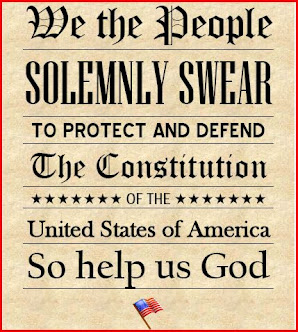Revolutionary Women; A Brief History
"I'm just a mom." "I'm just a woman." "I'm just one person". The list goes on, doesn't it? After all, what can we, as American women, loving wives and under-appreciated moms, do that will make a difference?
Well, I stumbled across this article and thought... huh; revolutionary women isn't something new after all. I hope you find this write-up as inspiring as I did.
American Athenas
Women in the Revolution
by Tina Ann Nguyen
"Actuated by the most glorious cause that mankind ever fought in, I am to defend this post to the very last extremity."1 The words of an American soldier during the American Revolution. However, this soldier was different from all the other soldiers. This soldier's name was Margaret Corbin, who survived the British attack on Fort Washington. Most importantly, she was a female participant in a war where the chief fighters were men.
Most history textbooks overlook women's roles in the American Revolution. Little is covered on women's contribution to the America's independence. The truth is, women were fiercely active in the independence cause and made gains for themselves.
Women's roles were limited in the colonial times. Marriage and motherhood were the primary goals for women. They lost property and legal rights upon marriage.2 Therefore, women were not expected to participate in the war.
Despite their low positions in society, women did participate. On the home front, they sewed uniforms and knitted stockings for the soldiers. With their husbands away fighting, some women had to take over as weavers, carpenters, blacksmiths, or shipbuilders. Others transformed their homes into hospitals for the wounded. One famous caretaker was Margaret Hill Morris. Because she demonstrated great expertise in medicine and herbal remedies, the sick depended on her. Every morning she made rounds to sick or wounded soldiers lodged in area homes.3
Like their male counterparts, women held protests against British goods. The Edenton Tea Party is one example. On one October day in 1774, fifty-one women signed Penelope Baker's declaration to ban English imports. They renounced drinking British tea and wearing clothes made of British cloth. However, unlike the Boston Tea Party, the signers did not attempt to hide their identities, and boldly signed their true names.4
Paul Revere was not the only one who announced the British's arrival. Sybil Ludington rode through Connecticut on a chilly April night and yelled that the British were burning Danbury and warned soldiers to prepare for a raid. Thanks to her daring actions, the British were halted at Ridgefield, Connecticut on April 27, 1777 and were forced to retreat to Long Island Sound5
Both men and women fought on the battlefield. Hundreds of women served as nurses, laundresses, cooks and companions to the male soldiers in the Continental Army.6 In addition, there were some that actually engaged in battle. Seeing "no reason to believe that any consideration foreign to the purest patriotism,"7 Deborah Sampson put on men's clothing and called herself Robert Shirtliffe in order to enlist in the Army. "Robert Shirtliffe" fought courageously; "his" company defeated marauding Indians north of Ticonderoga.8 There is also the valiancy of the water carrier Mary Hays, otherwise known as Molly Pitcher, who took up arms after her husband fell.9 As a six-foot tall woman, Nancy Hart was considered an Amazon Warrior. Living in the Georgia frontier, this "War Woman" aimed and, with deadly accuracy, shot British soldiers who invaded the area.10 Mentioned in the beginning of this essay was Margaret Corbin, another woman on the battlefield.
There were many American spies during the war, but the most remarkable one was Lydia Darragh of Philadelphia, a Quaker. Tricking the British soldiers conferencing in her home into believing that she was asleep, Friend Lydia learned that they were going to surprise Washington's army at Whitemarsh. Shocked, she proceeded the next day to Frankford pretending to fill her flour sack at a flourmill there. After clearing the British outposts, she ran into the American army and revealed the British's strategy. With this vital information, the Continental Army was able to thwart the British's plans.11
In the end, the Americans won the American Revolution and independence from the British. In the spirit of the Revolution, women also gained some independence from their confining roles because of their efforts in the war. Greater numbers of young girls were allowed to go to school. More women held jobs, campaigned against slavery, improved prisons and poorhouses conditions, and advocated women's rights.12 Abigail Adams, a fervent advocate of women's rights, wrote to her husband John Adams at the Continental Congress that "If particular care and attention is not paid to the Ladies, we are determined to foment a Rebellion, and will not hold ourselves bound by any Laws in which we have no voice or Representation."13
In conclusion, women contributed a great deal to the American Revolution. Their actions on the home front and on the battlefields relieved the men from the extra planning, mobilizing, and combating that they would have had to execute without the help of the women. This allowed the Continental Army to fully concentrate on defeating the British and acquiring sovereignty. America could not have been the powerful independent nation it is today without the service of the women.















0 comments:
Post a Comment